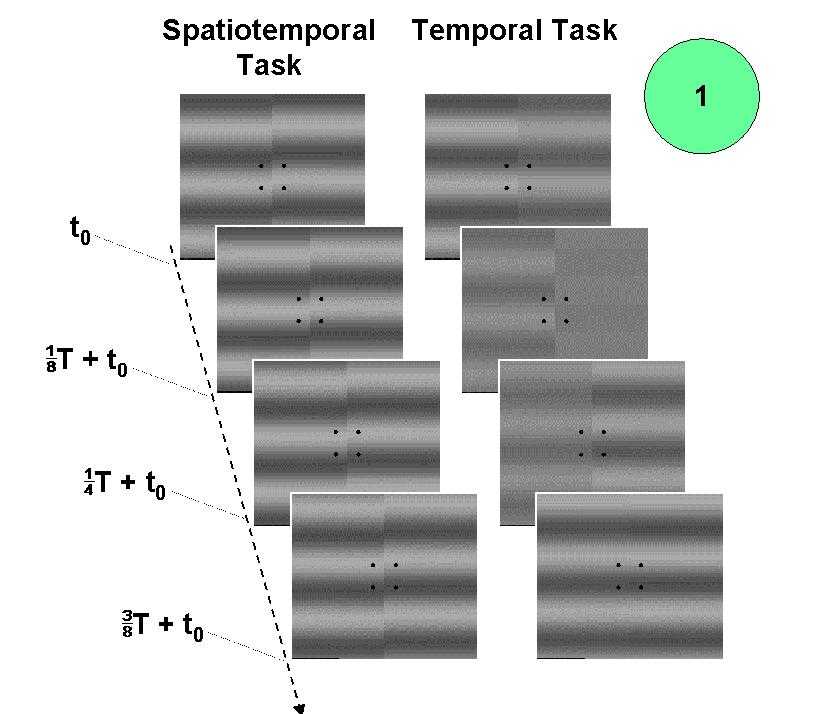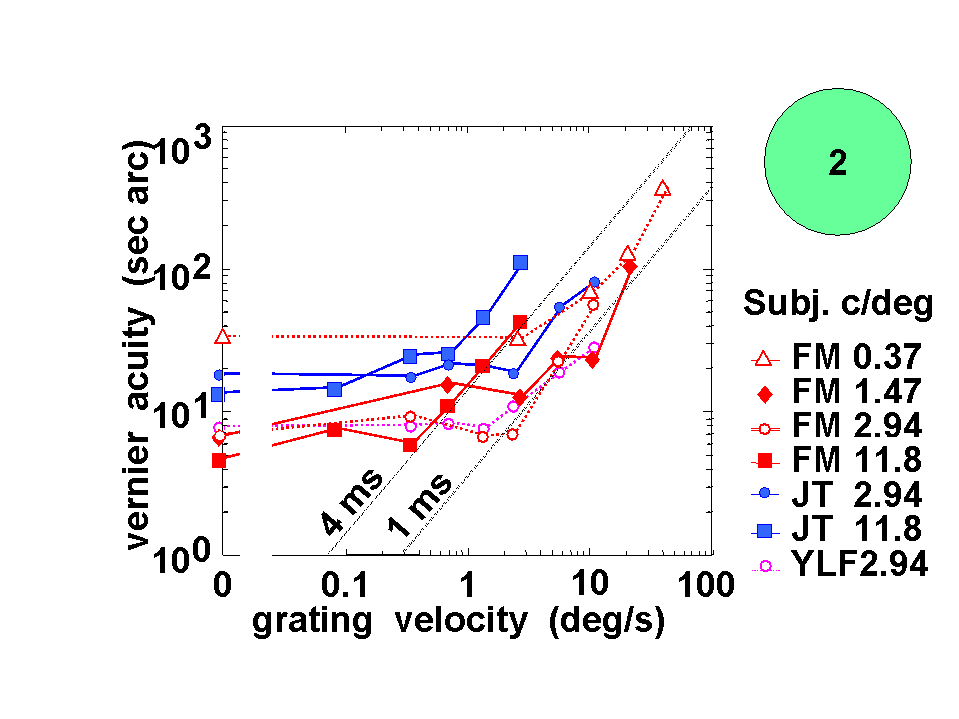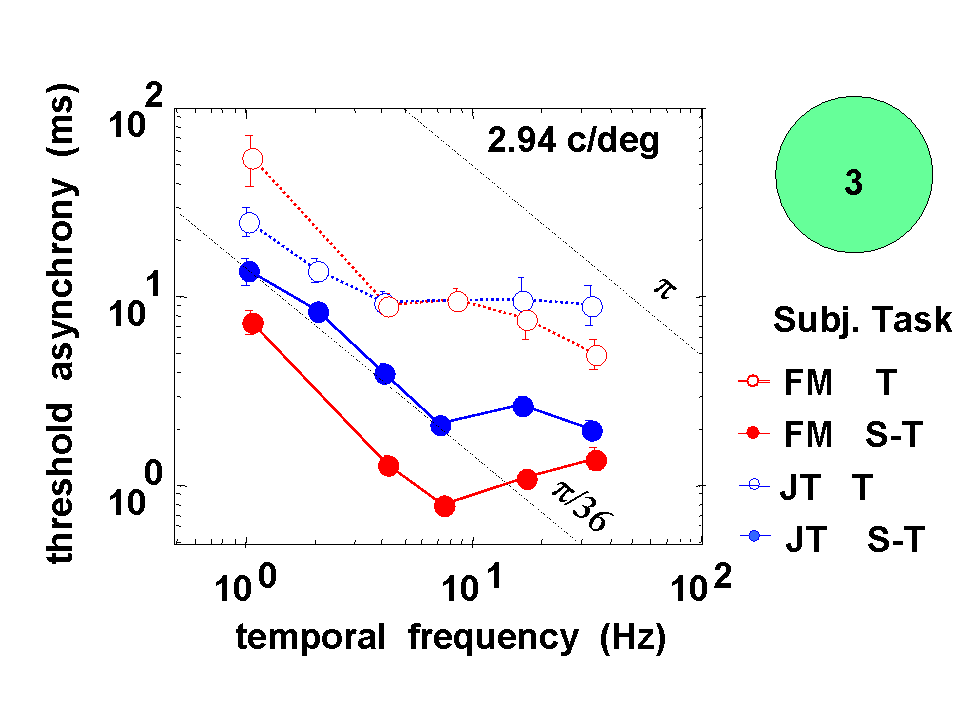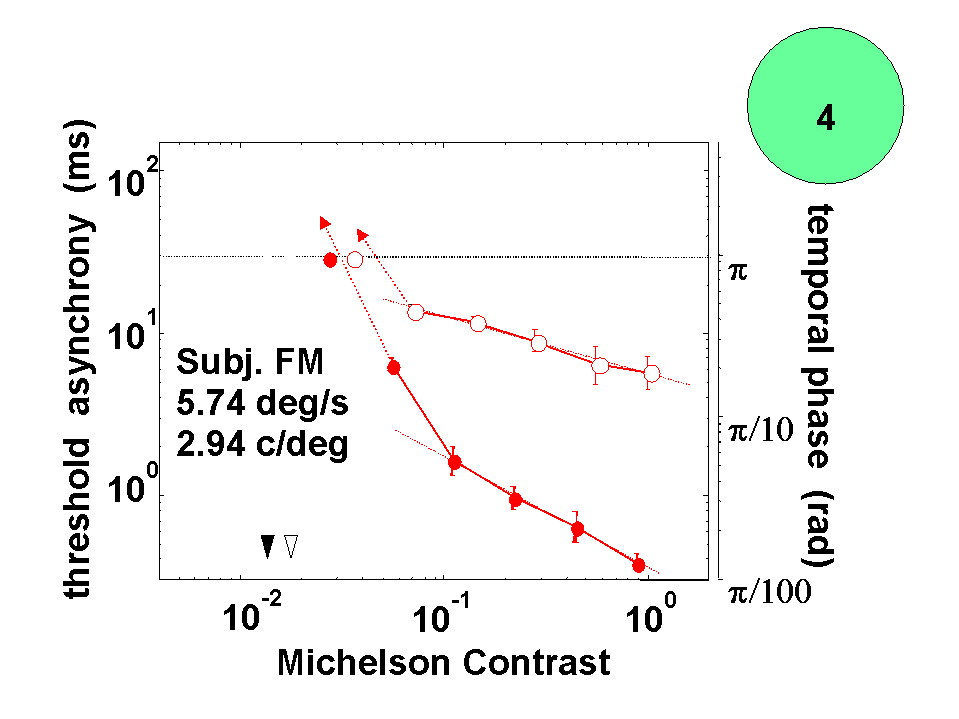
For rapidly translating targets, vernier thresholds correspond to millisecond asynchronies between targets. The "temporal hypothesis" is that these thresholds reflect the limiting sensitivity of asynchrony detectors. Previous studies showed that temporal thresholds are generally higher than vernier thresholds, but failed to reject the "temporal hypothesis" because stimuli had differing spatiotemporal characteristics, and temporal thresholds depend strongly on stimulus and task. Here we use matched grating stimuli to test, and reject, the temporal hypothesis. Expressed as asynchrony, temporal phase discrimination was typically tenfold poorer than vernier thresholds, and differed in dependence on spatial frequency, temporal frequency, contrast, and susceptibility to stroboscopic masks.
To test the "temporal hypothesis" for moving vernier thresholds, we compared thresholds on two tasks that were matched in spatiotemporal characteristics. One task (the "spatiotemporal task") consisted of judging the spatial offset of drifting sinusoidal gratings. The second task ("temporal task") consisted of judging the relative temporal phase of two flickering, contrast-reversing, gratings. Figure 1 shows four frames, with equal time lags, of a typical stimulus used for each task.

Figure 2 shows vernier thresholds for high contrast drifting gratings as a function of drift speed. We find that the asynchrony limit varies considerably (1 to 8 ms) as shown by the slanting dotted lines, and depends both on the spatial frequency of the target and on the observer.

Figure 3 compares thresholds (expressed as asynchrony) in the spatiotemporal moving vernier task (S-T, solid symbols) and the temporal task (T, open symbols). The order of magnitude difference, across various conditions and subjects, contradicts the temporal hypothesis -- which predicts similar performance. The slanting dotted lines indicate constant temporal phase offsets.

Across comparable ranges of target visibility, thresholds for vernier offset (closed symbols, steep slope) decrease much more rapidly thresholds for temporal phase offset (open symbols, shallower slope), as seen in Figure 4. Detection thresholds for the two tasks are indicated by the inverted triangles (filled for the S-T (vernier) task, open for the T task).

The different contrast dependences eliminates the possibility that a lower visibility accounts for the poorer performance in the temporal task. Moreover, the contrast-dependence of thresholds in the temporal task suggests a predominantly magnocellular input, while the contrast dependence in the drifting vernier task suggests a greater proportion of parvocellular input.